NEW

Application Development in Multi-Purpose Magnets for ECS-F1VE155K: Key Technologies and Success StoriesDeveloping applications for multi-purpose magnets, particularly in the context of the ECS-F1VE155K, involves leveraging various key technologies and methodologies. Here’s an overview of the key technologies and some success stories that illustrate the potential of these magnets in various applications.
Key Technologies1. Magnetic Materials2. Magnetic Field Simulation3. Sensor Integration4. Control Systems5. 3D Printing and Additive Manufacturing6. Energy Harvesting1. Electric Vehicles (EVs)2. Medical Imaging3. Consumer Electronics4. Robotics5. Renewable Energy6. Industrial Automation Success Stories ConclusionThe application development of multi-purpose magnets, particularly in the ECS-F1VE155K context, showcases the versatility and potential of magnetic technologies across various industries. By leveraging advanced materials, simulation techniques, and integration with modern control systems, businesses can create innovative solutions that enhance performance, efficiency, and user experience. The success stories across different sectors highlight the transformative impact of these technologies, paving the way for future advancements in magnet applications. As industries continue to evolve, the role of multi-purpose magnets will likely expand, driving innovation and efficiency in numerous fields.
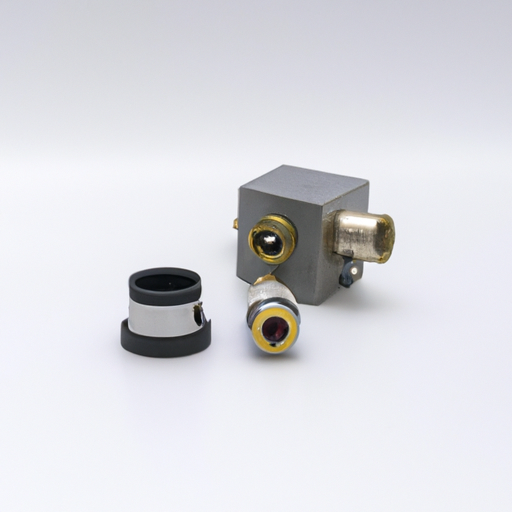
Overview of Sensor and Transducer AccessoriesWhile the IRF510 is a N-channel MOSFET used in various electronic applications, it plays a crucial role in interfacing with sensors and transducers. Understanding the core functional technologies and application development cases of sensor and transducer accessories can help in designing effective systems that utilize these components.
Core Functional Technologies of Sensors and Transducer Accessories1. Signal Conditioning2. Power Management3. Communication Interfaces4. Mounting and Housing1. Environmental Monitoring2. Industrial Automation3. Healthcare Monitoring4. Smart Agriculture5. Home Automation Application Development Cases ConclusionThe effective use of sensors and transducer accessories relies on a solid understanding of their core functional technologies and their applications across various domains. By leveraging signal conditioning, power management, communication interfaces, and appropriate mounting solutions, developers can create innovative applications that enhance efficiency, safety, and user experience across multiple industries. The IRF510, while not a sensor itself, plays a vital role in these systems by enabling efficient control and interfacing, particularly in applications requiring power management and signal amplification.
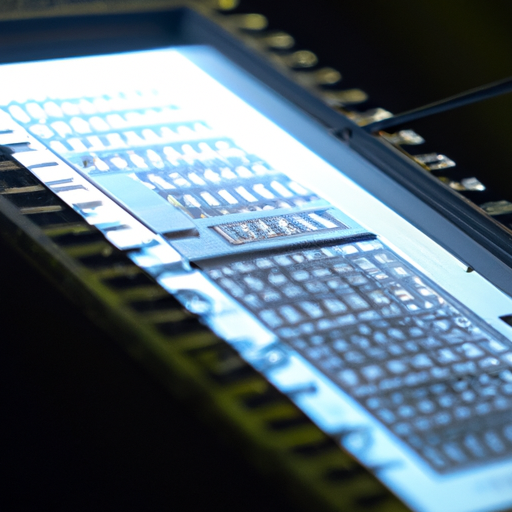
Application Development in Particle and Dust Sensors for CFR-25JB-52-110R: Key Technologies and Success StoriesDeveloping applications for particle and dust sensors, such as the CFR-25JB-52-110R, involves leveraging various key technologies and methodologies to ensure accurate measurement, data processing, and effective communication. Below are some key technologies and success stories related to the application development in this domain.
Key Technologies1. Sensor Technology2. Microcontroller Integration3. Wireless Communication4. Data Analytics and Machine Learning5. Cloud Computing6. Mobile Applications7. User Interface Design1. Smart City Initiatives2. Industrial Applications3. Agricultural Monitoring4. Home Automation5. Research and Development Success Stories ConclusionThe development of applications for particle and dust sensors like the CFR-25JB-52-110R is a rapidly evolving field that combines various technologies to address air quality challenges. By leveraging advancements in sensor technology, data analytics, and communication, developers can create innovative solutions that enhance public health, safety, and environmental sustainability. Success stories from smart cities, industrial applications, and home automation demonstrate the potential impact of these technologies on society, highlighting the importance of continued investment and innovation in this area.
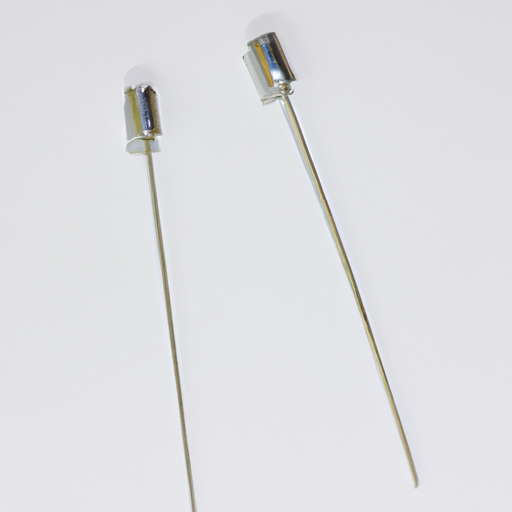
Core Functional Technology of NTC Thermistors1. Temperature Sensitivity: NTC thermistors, such as the CFR-25JB-52-110K, are designed to exhibit a significant change in resistance with temperature variations. This characteristic allows for precise temperature measurements, making them suitable for applications requiring high accuracy.
2. Resistance-Temperature Characteristics: The relationship between resistance and temperature in NTC thermistors can be described using the Steinhart-Hart equation or a simpler exponential model. This mathematical relationship enables the conversion of resistance values into accurate temperature readings, which can be calibrated for specific applications. 3. Fast Response Time: NTC thermistors respond quickly to temperature changes, which is crucial for applications that require immediate temperature monitoring and control. This rapid response enhances the performance of systems that rely on real-time temperature data.
4. Compact Size: The CFR-25JB-52-110K thermistor's small form factor allows for easy integration into various devices and systems, making it an ideal choice for applications where space is limited.
5. Cost-Effectiveness: Compared to other temperature sensing technologies, such as RTDs and thermocouples, NTC thermistors are generally more affordable. This cost-effectiveness makes them a popular choice across a wide range of applications.
Application Development Cases1. Consumer Electronics: NTC thermistors are extensively used in consumer electronics for temperature monitoring and control. For instance, in refrigerators and air conditioners, they help maintain optimal temperatures, enhancing energy efficiency and performance. In ovens, they ensure accurate cooking temperatures.
2. Automotive Applications: In the automotive sector, NTC thermistors play a vital role in monitoring engine temperatures, controlling cabin climate, and managing battery temperatures in electric vehicles. Their precise readings contribute to improved vehicle performance, safety, and energy efficiency.
3. Medical Devices: NTC thermistors are integral to medical devices, including thermometers, incubators, and patient monitoring systems. Their reliability and accuracy are essential for ensuring proper patient care, particularly in critical environments.
4. HVAC Systems: In heating, ventilation, and air conditioning (HVAC) systems, NTC thermistors are used to monitor and control the temperature of air and fluids. This capability helps maintain comfortable indoor environments while optimizing energy consumption and system efficiency.
5. Industrial Applications: NTC thermistors are employed in various industrial settings for temperature monitoring in manufacturing processes, equipment protection, and HVAC systems. Their robustness and reliability make them suitable for harsh environments, ensuring consistent performance.
6. Home Automation: With the rise of smart home technology, NTC thermistors are increasingly integrated into home automation systems. They enable smart thermostats to accurately sense temperature changes, learn user preferences, and optimize heating and cooling schedules for enhanced comfort and energy savings.
ConclusionThe CFR-25JB-52-110K NTC thermistor exemplifies the core functional technology of NTC thermistors, offering precise temperature measurement, fast response times, and cost-effectiveness. Its applications span various industries, including consumer electronics, automotive, medical devices, HVAC systems, industrial applications, and home automation. As technology continues to evolve, the role of NTC thermistors in temperature sensing and control is expected to expand, driving innovation and efficiency across numerous fields. The versatility and reliability of NTC thermistors make them a critical component in modern temperature management solutions.

Application Development in IGBT Modules for LT1178ACN8: Key Technologies and Success StoriesThe LT1178ACN8, a precision voltage reference and regulator from Analog Devices, plays a vital role in ensuring stable voltage levels in various applications, including those involving IGBT (Insulated Gate Bipolar Transistor) modules. While the LT1178ACN8 is not an IGBT device itself, it can be integral in the control and monitoring circuits of IGBT applications. Below, we explore key technologies related to IGBT modules and highlight success stories that demonstrate their impact in various sectors.
Key Technologies in IGBT Modules1. High-Speed Switching 2. Thermal Management 3. Gate Drive Technology 4. Modular Design 5. Integrated Protection Features 6. Smart IGBTs 1. Renewable Energy Systems 2. Electric Vehicles (EVs) 3. Industrial Automation 4. HVDC Transmission 5. Power Supplies Success Stories ConclusionWhile the LT1178ACN8 serves as a precision voltage reference, its integration into control circuits for IGBT modules can enhance the performance and reliability of power electronic systems. The advancements in IGBT technology have led to significant improvements across various industries, particularly in renewable energy, electric vehicles, and industrial automation. As the demand for efficient power electronics continues to rise, the development and application of IGBT technology will likely expand, paving the way for more innovative solutions and success stories in the future.

Application Development in Zener Diode Arrays for CFR-25JB-52-10K: Key Technologies and Success StoriesZener diode arrays, such as the CFR-25JB-52-10K, play a crucial role in modern electronic applications due to their ability to provide voltage regulation and protection against voltage spikes. Below, we explore key technologies associated with Zener diode arrays and highlight notable success stories across various industries.
Key Technologies1. Voltage Regulation 2. Transient Voltage Suppression (TVS) 3. Clamping Circuits 4. Temperature Compensation 5. Array Configurations 6. Integration with Other Components 1. Consumer Electronics 2. Automotive Applications 3. Telecommunications 4. Industrial Automation 5. Medical Devices Success Stories ConclusionThe application development of Zener diode arrays, exemplified by the CFR-25JB-52-10K, has been significantly influenced by technological advancements and the increasing demand for reliable voltage regulation and protection across various industries. Success stories in consumer electronics, automotive, telecommunications, industrial automation, and medical devices underscore the versatility and critical importance of Zener diode arrays in contemporary electronic design. As technology continues to evolve, the role of Zener diodes in enhancing the reliability and safety of electronic systems is expected to expand, paving the way for innovative applications in the future.

Overview of CFR-50JB-52-10K and Core Functional TechnologiesThe CFR-50JB-52-10K is likely a specific model of a component or device used in various applications, particularly in electronics or engineering. While specific details about this model are not available, we can explore the core functional technologies and application development cases relevant to special-purpose devices, which may include the CFR-50JB-52-10K.
Core Functional Technologies1. Microcontrollers and Embedded Systems2. Sensors and Actuators3. Power Management4. Communication Protocols5. Data Processing and Analytics1. Smart Home Automation2. Industrial IoT Solutions3. Healthcare Monitoring Systems4. Automotive Applications5. Agricultural Technology Application Development Cases ConclusionThe CFR-50JB-52-10K, as a special-purpose device, likely incorporates several of the core technologies discussed above to effectively serve specific applications. Understanding these functional technologies and successful application cases can inform the development of innovative solutions across various sectors, including home automation, industrial applications, healthcare, automotive, and agriculture. For detailed specifications and capabilities of the CFR-50JB-52-10K, consulting the manufacturer's documentation or technical resources would provide valuable insights.

Application Development in Bipolar Transistor Arrays: Pre-Biased MM74HC244NBipolar transistor arrays, particularly pre-biased configurations like the MM74HC244N, are integral to modern electronic applications. Their versatility and efficiency make them essential components in various digital circuits, including buffering, driving, and signal conditioning. Below is a detailed overview of key technologies and success stories associated with the application development of the MM74HC244N.
Key Technologies1. Integrated Circuit Design2. Pre-Biased Configuration3. Signal Integrity4. Level Shifting5. Noise Immunity6. Temperature Stability1. Consumer Electronics2. Automotive Applications3. Industrial Automation4. Telecommunications5. Robotics Success Stories ConclusionThe MM74HC244N and similar pre-biased bipolar transistor arrays are pivotal in contemporary electronic design. Their versatility, combined with the advantages of integrated circuit technology, has led to successful implementations across various industries. As technology continues to advance, the demand for efficient, reliable, and compact solutions like the MM74HC244N is expected to grow, driving further innovation in application development. The ongoing evolution of electronic systems will likely see an increased reliance on such components to meet the challenges of modern design and functionality.
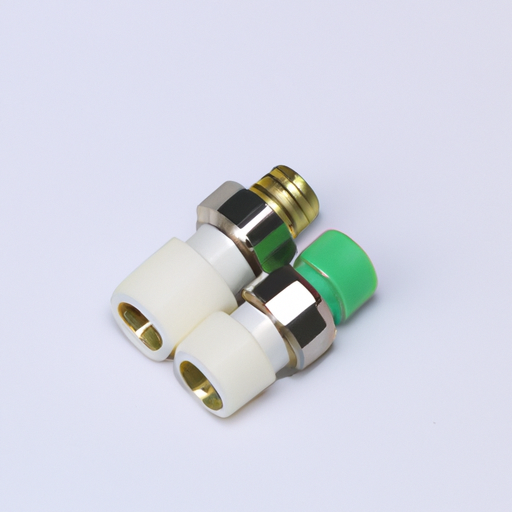
Overview of CFR-50JB-52-10R Single, Pre-Biased Bipolar TransistorsThe CFR-50JB-52-10R is a specialized model of a single, pre-biased bipolar transistor that integrates biasing resistors within its package. This design innovation simplifies circuit design, making it particularly advantageous for applications where space is limited and minimizing external components is a priority.
Core Functional Technology1. Pre-Biased Configuration2. Bipolar Junction Transistor (BJT) Operation3. Integrated Biasing4. Compact Design1. Audio Amplifiers2. Switching Regulators3. Signal Processing4. LED Drivers5. Sensor Interfaces Application Development Cases ConclusionThe CFR-50JB-52-10R single, pre-biased bipolar transistor presents significant advantages in design simplicity, space efficiency, and reliable performance across a variety of applications. Its core technology features, including integrated biasing and compact design, make it an excellent choice for engineers aiming to streamline their designs while maintaining high performance. The diverse application development cases illustrate its versatility in audio, power management, signal processing, and sensor interfacing, underscoring its potential in contemporary electronic systems.
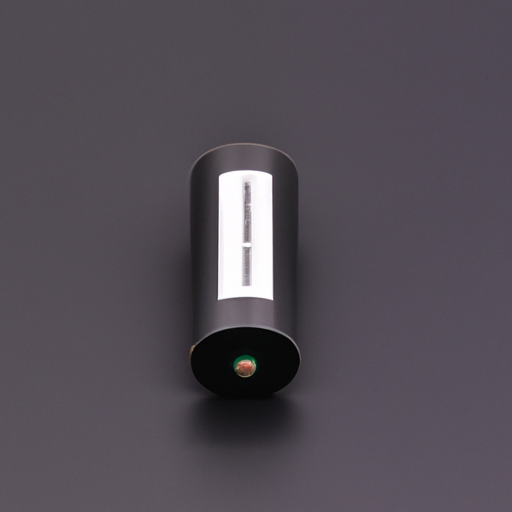
Application Development in Bipolar RF Transistors for MM74HC251N: Key Technologies and Success StoriesBipolar RF transistors are integral to the design and functionality of various electronic systems, particularly in RF communication and signal processing. When paired with devices like the MM74HC251N multiplexer/demultiplexer, they enable advanced applications across multiple industries. Below, we explore key technologies and notable success stories that highlight the impact of these components.
Key Technologies1. High-Frequency Operation2. Low Noise Amplification3. Integration with Digital Logic4. Power Amplification5. Mixing and Modulation6. Thermal Management7. Simulation and Modeling1. Wireless Communication Systems2. Satellite Communication3. Consumer Electronics4. Automotive Applications5. Medical Devices Success Stories ConclusionThe development of applications utilizing bipolar RF transistors in conjunction with devices like the MM74HC251N has significantly advanced various fields, including telecommunications, consumer electronics, automotive systems, and medical devices. The combination of high-frequency performance, low noise, and efficient signal processing capabilities has made these technologies indispensable in modern electronic design. As technology continues to evolve, further innovations in this area are anticipated, paving the way for even more efficient and capable systems. The ongoing collaboration between RF and digital technologies will likely yield transformative solutions across multiple industries.

Application Development in Bipolar Transistor Arrays for MM74HC259N: Key Technologies and Success StoriesThe MM74HC259N is a high-speed CMOS logic device that functions as an 8-bit addressable latch, widely utilized in various applications such as data storage, digital signal processing, and control systems. When exploring application development in bipolar transistor arrays in relation to the MM74HC259N, several key technologies and success stories emerge.
Key Technologies1. Bipolar Junction Transistors (BJTs)2. CMOS Technology3. Integrated Circuit Design4. Mixed-Signal Design5. Programmable Logic Devices (PLDs)6. Signal Conditioning1. Consumer Electronics2. Industrial Automation3. Telecommunications4. Automotive Applications5. Medical Devices Success Stories ConclusionThe development of applications using the MM74HC259N in conjunction with bipolar transistor arrays highlights the versatility and effectiveness of combining different technologies. By leveraging the strengths of both CMOS and bipolar technologies, engineers can create innovative solutions across various industries, leading to improved performance, efficiency, and reliability in electronic systems. As technology continues to advance, the integration of these components will likely play a crucial role in the evolution of electronic applications, paving the way for new possibilities in design and functionality.
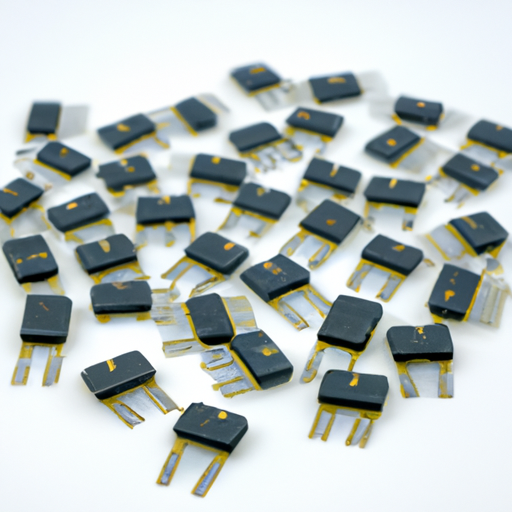
Overview of CFR-50JB-52-100K Diode ArraysThe CFR-50JB-52-100K is a specific type of diode array that exemplifies the core functional technology of diode arrays in electronic applications. Below is a detailed overview of its core functionalities and application development cases.
Core Functional Technology of Diode Arrays1. Integrated Design: The CFR-50JB-52-100K integrates multiple diodes into a single package, which minimizes space requirements and simplifies circuit design. This integration is particularly beneficial in compact electronic devices. 2. Versatile Functionality Diode arrays like the CFR-50JB-52-100K can perform various essential functions:3. Diverse Diode Types The array may include different diode types, such as:4. Thermal Management: Effective thermal management is critical, especially in high-power applications. The CFR-50JB-52-100K is designed to dissipate heat efficiently, ensuring reliability and longevity.
5. Integration with Other Components: The ability to integrate with resistors, capacitors, and other components allows for the creation of complex functions within a single package, enhancing circuit efficiency.
Application Development Cases1. Power Supply Circuits: The CFR-50JB-52-100K is widely used in power supply circuits for rectification, converting AC voltage to DC voltage, which is essential for powering electronic devices.
2. Signal Protection: In communication systems, this diode array protects sensitive components from voltage spikes and transients, making it ideal for ESD (Electrostatic Discharge) protection circuits.
3. LED Drivers: The array can be utilized in LED driver circuits to manage current flow, ensuring consistent brightness across multiple LEDs. This application is particularly relevant in modern lighting solutions.
4. RF Applications: In RF (Radio Frequency) applications, the CFR-50JB-52-100K can be employed for signal mixing and detection, aiding in demodulating signals and enhancing RF circuit performance.
5. Automotive Electronics: The diode array is used in automotive applications, such as battery management systems, where it helps manage the charging and discharging processes of batteries, ensuring efficient energy use.
6. Consumer Electronics: In devices like smartphones and tablets, the CFR-50JB-52-100K is integral for power management, signal processing, and protection against voltage fluctuations, contributing to the overall reliability of these devices.
ConclusionThe CFR-50JB-52-100K diode array exemplifies the critical role of diode arrays in modern electronics. By providing compact, efficient solutions for a variety of applications, it enhances performance in power management, signal processing, and protection circuits. For further insights and specific case studies, consulting technical journals, manufacturer datasheets, and application notes from semiconductor companies would be beneficial. These resources can provide deeper technical details and real-world examples of the CFR-50JB-52-100K in action.

Application Development in IGBT Arrays for ECQ-P1H153GZ: Key Technologies and Success StoriesIGBT (Insulated Gate Bipolar Transistor) arrays, such as the ECQ-P1H153GZ, are essential components in modern power electronics, enabling efficient control and conversion of electrical energy. Their applications span across various sectors, including renewable energy, electric vehicles, and industrial automation. Below, we explore key technologies that enhance the performance of IGBT arrays and highlight notable success stories that demonstrate their impact.
Key Technologies1. Modular Design 2. Thermal Management 3. Gate Drive Technology 4. Control Algorithms 5. Integration with Digital Control 6. Protection Mechanisms 7. Simulation and Modeling Tools 1. Renewable Energy Systems 2. Electric Vehicles (EVs) 3. Industrial Motor Drives 4. HVDC (High Voltage Direct Current) Transmission 5. Consumer Electronics Success Stories ConclusionThe development and application of IGBT arrays like the ECQ-P1H153GZ have transformed various industries by enabling efficient power conversion and control. With ongoing advancements in technology and a growing demand for energy-efficient solutions, IGBT arrays are poised to play a crucial role in the future of power electronics, driving innovation across multiple sectors. As industries continue to evolve, the integration of IGBT technology will be key to achieving sustainable and efficient energy solutions.

Application Development in FET and MOSFET Arrays for 2474-26L: Key Technologies and Success StoriesThe development of applications utilizing Field Effect Transistors (FETs) and Metal-Oxide-Semiconductor Field-Effect Transistors (MOSFETs), particularly in the context of the 2474-26L, highlights the transformative impact of these technologies across various sectors. Below, we delve into key technologies and notable success stories that illustrate the capabilities and applications of FET and MOSFET arrays.
Key Technologies1. High-Speed Switching2. Low On-Resistance3. Thermal Management4. Integration with Digital Control5. Array Configuration6. Gate Drive Technology1. Power Management ICs2. Electric Vehicles (EVs)3. Renewable Energy Systems4. Telecommunications5. Consumer Electronics Success Stories ConclusionThe application development of FET and MOSFET arrays, particularly in the context of the 2474-26L, underscores the versatility and efficiency of these technologies across diverse industries. By harnessing their unique properties, engineers and developers can create innovative solutions that address the challenges of modern electronic systems. As technology continues to advance, the role of MOSFETs and FETs is expected to expand, paving the way for even more success stories in power management, renewable energy, automotive technology, and beyond. The ongoing evolution of these technologies will undoubtedly contribute to the development of smarter, more efficient electronic systems in the future.
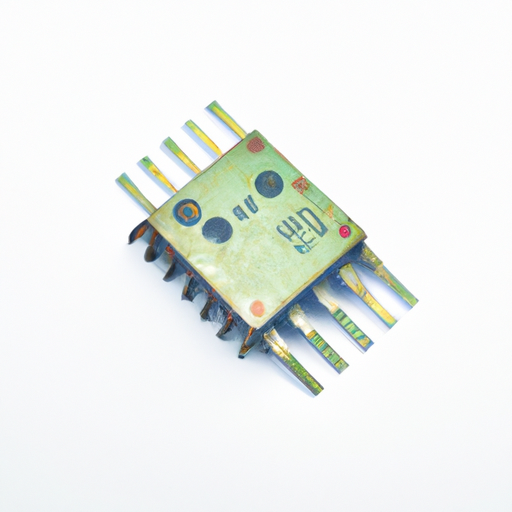
CFR-25JB-52-100R JFET: Core Functional Technology and Application DevelopmentThe CFR-25JB-52-100R is a specific model of a Junction Field Effect Transistor (JFET), a type of field-effect transistor that is widely utilized in various electronic applications. JFETs are particularly valued for their high input impedance, low noise characteristics, and linearity, making them suitable for a range of applications, especially in analog circuits.
Core Functional Technology of JFETs1. Basic Operation2. Types of JFETs3. Characteristics1. Audio Amplifiers2. RF Amplifiers3. Analog Switches4. Sensor Applications5. Voltage-Controlled Resistors (VCRs)6. Oscillators and Mixers Application Development Cases of JFETs ConclusionThe CFR-25JB-52-100R JFET exemplifies the essential characteristics and functionalities of JFETs, making it a valuable component in various electronic applications. Its high input impedance, low noise, and linearity render it effective for use in audio, RF, and sensor applications. By understanding the core functional technology and exploring diverse application development cases, engineers and designers can effectively leverage JFETs in their projects, enhancing performance and reliability in electronic systems.

Application Development in Zener Diodes: Key Technologies and Success StoriesZener diodes are essential components in electronic circuits, primarily known for their ability to regulate voltage and protect sensitive components. Below, we explore key technologies involving Zener diodes and highlight notable success stories across various industries.
Key Technologies Involving Zener Diodes1. Voltage Regulation2. Clamping Circuits3. Reference Voltage Sources4. Temperature Compensation5. LED Drivers1. Consumer Electronics2. Automotive Applications3. Telecommunications4. Industrial Automation5. Medical Devices Success Stories ConclusionZener diodes are pivotal in various applications across multiple industries, providing essential functions such as voltage regulation, protection, and stability. Their reliability has led to numerous success stories in consumer electronics, automotive, telecommunications, industrial automation, and medical devices. As technology advances, the role of Zener diodes is expected to expand, further solidifying their importance in electronic design and development. Their versatility and effectiveness make them a staple in modern electronic applications, ensuring that devices operate safely and efficiently.
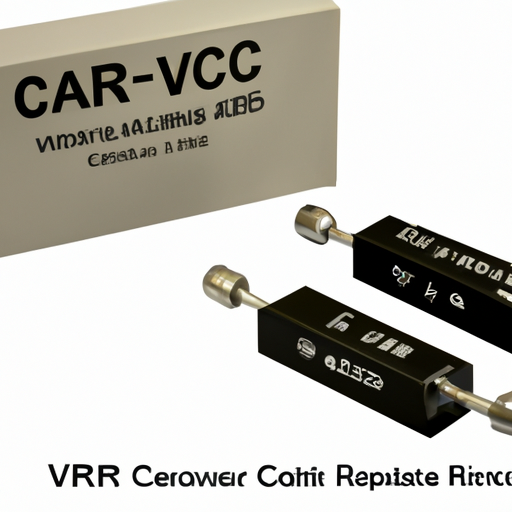
Overview of Variable Capacitance Diodes (Varicaps, Varactors)Variable capacitance diodes, commonly referred to as varicaps or varactors, are semiconductor devices that utilize the voltage-dependent capacitance of a reverse-biased p-n junction. These components are integral to a wide range of applications, particularly in tuning circuits, frequency modulation, and signal processing. Below, we delve into the core functional technologies and notable application development cases that showcase the effectiveness of varicaps.
Core Functional Technology Articles1. Principle of Operation2. Capacitance-Voltage Characteristics3. Types of Varactors4. Tuning Range and Quality Factor1. Tuning Circuits2. Phase-Locked Loops (PLLs)3. Voltage-Controlled Oscillators (VCOs)4. RF Filters5. Smart Antennas6. Automotive Applications7. Consumer Electronics Application Development Cases ConclusionVariable capacitance diodes (varicaps) are versatile components that play a critical role in modern electronic systems. Their ability to provide variable capacitance with voltage control makes them invaluable in tuning, filtering, and signal processing applications. As technology continues to advance, the development of varactor technology is expected to evolve, leading to enhanced performance and new applications across various fields, including telecommunications, automotive, and consumer electronics. The ongoing research and innovation in this area promise to unlock further potential for varicaps in future electronic designs.
基本
文件
流程
错误
SQL
调试
- 请求信息 : 2025-07-02 07:49:33 HTTP/1.1 GET : http://wxdzbt.cn/en/news.html
- 运行时间 : 0.048066s [ 吞吐率:20.80req/s ] 内存消耗:1,564.77kb 文件加载:201
- 查询信息 : 16 queries
- 缓存信息 : 2 reads,0 writes
- 会话信息 : SESSION_ID=253d6449be7df81781a88e8fdd65e6c5
- CONNECT:[ UseTime:0.000445s ] mysql:host=127.0.0.1;port=3306;dbname=wxdzbt_cn;charset=utf8mb4
- SHOW FULL COLUMNS FROM `moban_site` [ RunTime:0.000812s ]
- SELECT * FROM `moban_site` WHERE `lang` = 'en' LIMIT 1 [ RunTime:0.000452s ]
- SHOW FULL COLUMNS FROM `moban_columns` [ RunTime:0.000646s ]
- SELECT * FROM `moban_columns` WHERE `state` = 1 AND `lang` = 'en' ORDER BY `sort` ASC [ RunTime:0.000565s ]
- SHOW FULL COLUMNS FROM `moban_news` [ RunTime:0.000679s ]
- SELECT * FROM `moban_news` WHERE `lang` = 'en' AND `state` = 1 LIMIT 1 [ RunTime:0.000496s ]
- SHOW FULL COLUMNS FROM `moban_news_category` [ RunTime:0.000631s ]
- SELECT * FROM `moban_news_category` WHERE `lang` = 'en' ORDER BY `id` ASC [ RunTime:0.000365s ]
- SHOW FULL COLUMNS FROM `moban_single_page` [ RunTime:0.000593s ]
- SELECT * FROM `moban_single_page` WHERE `id` IN (0,28,34,73) AND `state` = 1 AND `lang` = 'en' [ RunTime:0.000867s ]
- SELECT * FROM `moban_single_page` WHERE `id` IN (0,2,68) AND `state` = 1 AND `lang` = 'en' [ RunTime:0.000545s ]
- SHOW FULL COLUMNS FROM `moban_link` [ RunTime:0.000590s ]
- SELECT * FROM `moban_link` WHERE `state` = 1 ORDER BY `sort` ASC [ RunTime:0.000353s ]
- SELECT COUNT(*) AS think_count FROM `moban_news` WHERE `state` = 1 AND `lang` = 'en' AND `is_draft` = 0 LIMIT 1 [ RunTime:0.000504s ]
- SELECT * FROM `moban_news` WHERE `state` = 1 AND `lang` = 'en' AND `is_draft` = 0 ORDER BY `sort` DESC,`id` DESC LIMIT 0,25 [ RunTime:0.000996s ]
- SELECT * FROM `moban_columns` WHERE `lang` = 'en' AND `link` = '/news' LIMIT 1 [ RunTime:0.000408s ]

0.058227s
